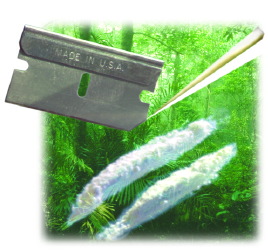 |
|  |
Spheres of Influence
|
| Environmental Casualties of the War on Drugs Stephanie Joyce Abstract
 In 1992, illicit drug use cost the U.S. medical system $98 billion, resulted in $14 billion in lost productivity, and led to $59.1 billion in litigation costs. Approximately 36% of AIDS cases reported to the Centers for Disease Control and Prevention in 1992 were related to intravenous drug use--a phenomenon mirrored in global figures on the AIDS pandemic. In 1992, illicit drug use cost the U.S. medical system $98 billion, resulted in $14 billion in lost productivity, and led to $59.1 billion in litigation costs. Approximately 36% of AIDS cases reported to the Centers for Disease Control and Prevention in 1992 were related to intravenous drug use--a phenomenon mirrored in global figures on the AIDS pandemic. But drug crop cultivation is also environmentally costly. Crops of coca, opium poppies, and marijuana have replaced native vegetation in an area surpassing 1 million hectares, often in protected areas such as species-rich rain forests and erosion-prone cloud forests. Additional environmental damage ensues from the cultivation and processing of these crops, which involves large volumes of pesticides, fertilizers, and toxic processing chemicals that end up being washed or dumped into rivers. Some experts feel the answer to the problem is eradication of the crops through herbicides. But others claim that herbicidal eradication may cause more harm than good to human and environmental health. Unfortunately, it is currently impossible to quantify the damage from drug crop eradication efforts because of the violence surrounding drug production. The small body of scientific evidence suggests that chemical eradication might cause less environmental damage than cultivation and production ; definitive studies on exactly how drug crop cultivation and chemical eradication affect human and ecological communities could serve as an important tool in approaching the global drug war and its aftermath.
The full version of this article is available for free in HTML format. |
|
|
 |
|

